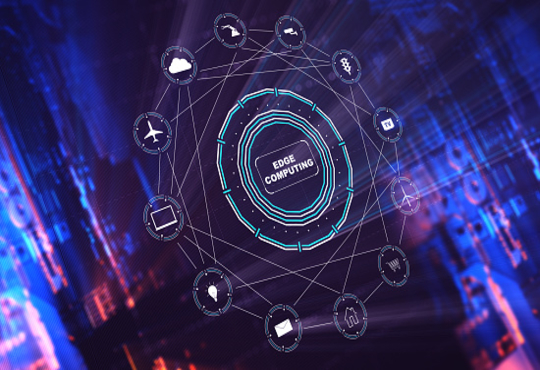Adoption of Edge Computing to Overcome Increasing Data Congestion
Samrat Pradhan, CIOReviewindia Team | Monday, 19 August 2019, 13:39 IST

According to Gartner the worldwide public cloud service market is expected to hit $331.2 billion, growing at a GACR of 12.6% by 2022, with Business Intelligence, Supply Chain Management and Enterprise Resource Planning seeing the highest spend on software-as-a-service (SaaS). The Cloud Computing plays a crucial role in Industry 4.0, especially in data processing and storage, quality control and manufacturing execution systems. But the rate at which the data are being generated globally is at its peak is mounting pressure on traditional Cloud Computing, further leading to the inefficiency of transmitting all this data to a cloud or data center for processing. It is not surprising that businesses are increasingly turning to the edge to solve challenges in cloud infrastructure - network latency, costly network bandwidth, data storage, security and compliance challenges. Moreover, improvements in sensor, microcontroller, and SoC technology enabling IoT devices to process high volumes of data efficiently and effectively will further signify the benefits of Edge Computing in complementing existing cloud computing.
Therefore, Edge Computing is proving to be more of an advantage in coming future than just an IT necessity. One of the key benefits of edge computing is that it transforms cloud computing into more distributed computing cloud architecture, limiting disruptions to only one point in the network. Edge Computing’ also prevents sites outages and increase availability for optimal site up-time, and the most important benefit of edge computing is its ability to increase network performance by reducing latency. The reasons for the adoption of more distributed Edge Computing are due to its speed, capacity, cost-effectiveness and responsiveness, as it is believed that the immense data could slow responses time, impacting centralized cloud-based computing usability. In this new era of computing, designing and developing these new edge devices need to be in accordance with the kinds of computing and storage requirements that exactly befit the current computing necessities. Carefully implementing and optimizing edge computing within organization’s networks will be crucial in overcoming future IoT disruptions. IDC research has also predicted that over 6 billion devices will be connected to the edge computing solution in next 3 years.
























































.jpg)
.jpg)








.jpg)

.jpg)

.jpg)
.jpg)



.jpg)


.jpg)





























.jpg)

.jpg)
.jpg)

.jpg)
.jpg)

































.jpg)

.jpg)



















.jpg)
















.jpg)












































































































